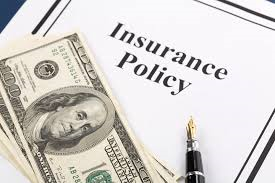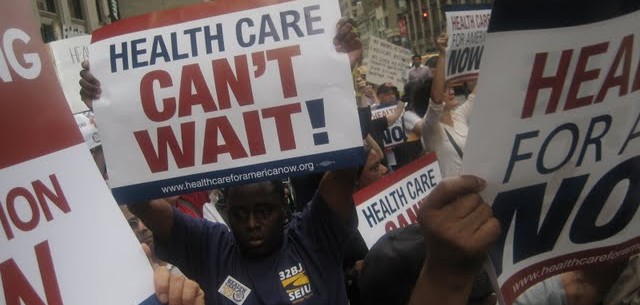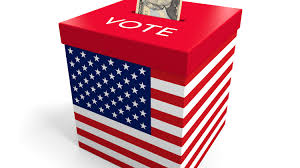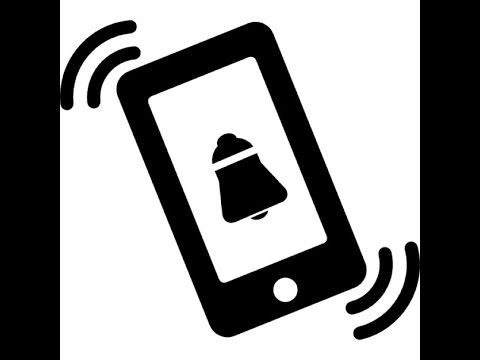It’s the annual “budget season” in Albany right now, and advocates, lobbyists, and others are crowding the halls of the State Capitol and the Legislative Office Building to plead their cause and the money needed for the programs they care about. As part of our statewide coalition Health Care for All New York (HCFANY), we too are working the shoe leather and bending the ears of legistors and their staff. Our key priorities include:

1. Expanding and preserving health coverage options for immigrants. Of those who are still uninsured across our state, immigrants are the largest group. While many have benefited from the Affordable Care Act (ACA), others remain without any options other than Emergency Medicaid. Also, some low-income immigrants who qualify for Medicaid because they have Temporary Protected Status (TPS) or Deferred Action for Childhood Arrivals (DACA) status may lose it because of anti-immigrant moves by the Trump administration.
What NY can do: Open up the state’s very successful (and public) Essential Plan to low-income immigrants who don’t otherwise qualify for Medicaid. The state should continue Medicaid coverage for people who may lose their TPS or DACA status.

2. Making coverage more affordable to buy and use. While the ACA has moderated health insurance premium growth significantly in New York, policies still remain expensive and deductibles and co-pays can be quite high depending on the metal-level plan one selects. When people move from public programs for the low-income into the private market, the financial shift can be quite dramatic and stressful, and many are living paycheck-to-paycheck.
What NY can do: Allow moderate-income people to “buy-in” to the Essential Plan at a modest premium price if they’d like. Also, augment existing federal premium assistance with additional funding to make premiums more affordable.

3. Reaching out to the still-uninsured to help them enroll in coverage. Surprisingly, there are a significant number of people who already qualify for public programs and financial assistance, but for a variety of reasons they have not yet enrolled in coverage. They often are among the hardest to reach because the “live in the shadows.”
What NY can do: Provide modest funding to trusted, grassroots community groups to go out and locate the uninsured, answer their questions, allay their fears, help them understand their options, and get them to enrollers.

4. Expanding consumer counselling and ombuds services. One of our state’s crown jewels resulting from the ACA is the Community Health Advocates (CHA) program. It is a statewide network of non-profit organizations which helps people and small employers who have all kinds of insurance. CHA helps them to use and solve problems with their coverage and accessing services, often saving them significant amounts of money and cutting through red-tape and hassles. As more people get enrolled in coverage and seek the care they need, demand for CHA’s free services is significantly increasing. (Find a CHA group near you at www.communityhealthadvcoacates.org or call their hotline at 888-614-5400.)
What NY can do: Increase funding for the program to help more people solve insurance issues and get and afford the care they need.

5. Distributing indigent care funding in a fair and just manner. New York has always provided robust amounts of funding to hospitals to provide care to the uninsured and low-income people. However, those funds have often not been properly distributed to those facilities that actually care for large numbers of uninsured and Medicaid patients. Because of provisions in the ACA, the state has moved to (mostly) fix this problem, but a once-temporary transition period has been inordinately extended, and our safety net and public hospitals still do not get the full funding they deserve.
What NY can do: End the transition period, and fully support safety net and public hospitals.

One question that may likely come up as you promote one or more of these ideas is “how to pay for it?” As we indicated in our previous email, the overall answer is to raise the revenue needed by requiring those who’ve economically benefited so much in the last decade (or longer) to now pay their fair share of taxes. Our colleagues at the Fiscal Policy Institute have a menu of good ideas for the Governor and Legislature to choose from, and we can push them forward. (See: www.fiscalpolicy.org.)
Among the key revenue options are:
- An “Ultra-Millionaires Tax” to create additional marginal tax rate tiers above current levels.
- A “Carried Interest Fairness Fee” to tax the incomes private equity and hedge fund managers at a rate equivalent to normal earned income.
- A “Pied-a-Terre” tax on unoccupied luxury apartments that merely serve as investment vehicles for real estate speculators.
- A “Stock Transfer Fairness Fee” on high volume sales of stocks.
- A “Stock Buy-Back Transfer Tax” on corporations who buy back their own stock from investors instead of using their excess profits and tax windfalls to create jobs, invest in research and development, or increase wages and benefits for their workers.
While all the issues discussed above may seem overwhelming, we urge you to take up those of them you feel comfortable and confident about, and reach out to your state legislators with your views on them. Some people will cover some of them, and others will do others, so that in the end, they all get raised and it’s all good. Thanks for taking on whatever you can do!




